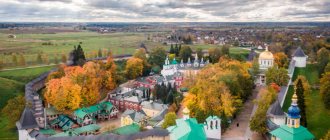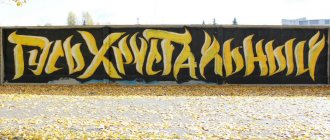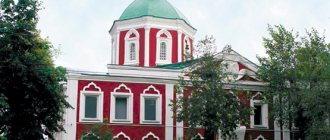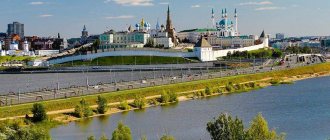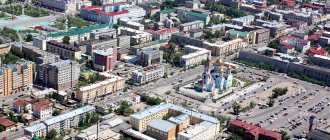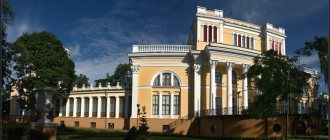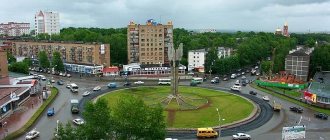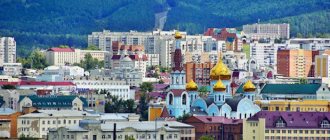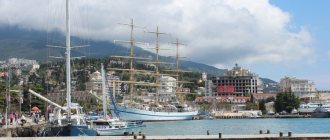District in the Republic of Bashkortostan, Russia
| Beloretsky district Beloretsky district | |
| District | |
| Other transcription(s) | |
| • Bashkir | Beloret districts |
| Big Shishenyak river next to Village from Bakeyevo in Beloretsky district | |
| Flag Coat of arms | |
| Location of Beloretsky district of the Republic of Bashkortostan. | |
| Coordinates: 53°50'N 58°36'E / 53.833°N W. 58.600° E. / 53.833; 58.600 Coordinates: 53°50'N 58°36'E. / 53.833 ° N W. 58.600° E. / 53.833; 58,600 | |
| A country | Russia |
| Federal subject | Republic of Bashkortostan [1] |
| Established | 1930 [2] |
| Administrative center | Beloretsk [3] |
| Square [4] | |
| • General | 11,302.58 km 2 (4,363.95 sq mi) |
| population size (2010 Census) [5] | |
| • General | 38 442 |
| • Evaluate (2018) [6] | 101 345 ( + 163,6% ) |
| • Density | 3.4/km2 (8.8/sq mi) |
| • Urban | 0% |
| • Rural | 100% |
| Administrative structure | |
| • Administrative division | 19 Selsovets |
| • Settlements [7] | 99 rural settlements |
| Municipal structure | |
| • Municipally registered as | Beloretsky municipal district [8] |
| • Municipalities [8] | 1 Urban settlements, 19 Rural settlements |
| Timezone | UTC+5 (MSK+2[9]) |
| OKTMO ID | 80611000 |
| Web site | https://beladmin.ru |
Population of Beloretsky District
| 2010 Census | 38 442 [5] |
| 2002 Census | 29 087 [10] |
| 1989 Census | 34 818 [11] |
| 1979 Census | 35 834 [12] |
Beloretsky district
(Russian: Beloretsky district; Bashkir: Beloret districts) is an administrative [1] and municipal [8] district (rayon), one of fifty-four in the Republic of Bashkortostan, Russia. It is located in the east of the republic and borders the Chelyabinsk region in the north, Uchalinsky in the east, Abzelilovsky in the southeast, Burzyansky in the south, Ishimbaysky in the southwest and the Gafuriysky and Arkhangelsk districts in the west. The area of the district is 11,302.58 square kilometers (4,363.95 sq mi). [4] Its administrative center is the city of Beloretsk [3] (which is not administratively part of the district). [7] As of the 2010 census, the total population of the county was 38,442. [5]
What to see for a tourist in Beloretsk in 1 day
The settlement, whose history goes back more than two and a half centuries, received city status only in 1923. It is separated from the capital of the region, Ufa, by 245 km. The city is the administrative center of the Beloretsky district of the Republic of Bashkortostan. About 65 thousand people live here. First, we will talk about its most significant tourist spots.
Belaya River, or Agidel
- Coordinates on the map: 53.960458, 58.394815.
Beloretsk received its name in honor of the water artery. It is about her that the legendary rock musician Yuri Shevchuk sings in one of his songs, “White River, Drops of the Past.” In Bashkir the reservoir is called Agidel.
Beloretsk is located near the source of the river, which originates at the famous Mount Iremel. The reservoir inspired many cultural figures; its picturesque shores attracted artists. The river is depicted on the canvases of A. Tyulkin and B. Domashnikov.
The city of the same name and its surroundings are a great place to walk along the river banks and enjoy the beauty and natural monuments. A popular entertainment for tourists is rafting, during which it is convenient to explore coastal attractions: rocks, grottos, caves.
Beloretsk Metallurgical Plant
- Address: st. V. Bluchera, 1.
Beloretsk traces its history back to 1762, when a metallurgical plant was founded here. It was founded by merchants and industrialists, two Ivans - Tverdyshev and Myasnikov. In the 1780s, the plant passed to Myasnikov’s daughter and went to her husband, A.I., as a dowry. Pashkov.
At the beginning of the 19th century, the iron smelted in Beloretsk, which gained popularity due to its malleability, was called “Pashkovsky” in the area after the owner’s name. The history and everyday life of Beloretsk are inextricably linked with the city-forming enterprise, which operates to this day as Beloretsk Metallurgical Plant OJSC.
A complex of historical buildings from the 18th-19th centuries has been preserved to this day. They are recognized as an object of historical and cultural heritage of Federal significance and can be considered the main architectural, industrial and historical landmark of Beloretsk.
Monument to Ivan Tverdyshev
- Address: V. Blucher street.
Simbirsk entrepreneur Ivan Borisovich Tverdyshev is revered in Beloretsk as the founder of the city. In 2012, on the occasion of the 250th anniversary of the settlement, the ranks of numerous city monuments were replenished with a statue of a merchant and industrialist leaning on a cane, two and a half meters high.
This monument was created by sculptor Natalya Kulikova and employee of the Beloretsk plant Alexander Kuldyaykin. The figure was made at the famous Kasli art casting plant.
Museum of History and Local Lore
- Address: st. V. Lenina, 30A.
The development of Beloretsk and other cities in the region, significant historical and cultural events and, of course, the amazing nature of the region became the main themes of the exhibition of the Beloretsk Museum of History and Local Lore, which opened back in 1969.
During its history, it has managed to be both a public museum and a branch of the Ufa National Museum of the Republic of Bashkortostan, and since 2006 it has been municipal.
The museum will tell you about the origins of the Bashkir people, introduce you to the inhabitants of the local fauna, and tell you about the metallurgical plants of the region. There is a hall of military and labor glory and an exhibition dedicated to the Great Patriotic War.
South Ural State Nature Reserve
- GPS coordinates: 54.346667, 57.885833.
Many people go to the Urals to get to know the famous mountain range. Beloretsk is one of those cities where a lot of interesting things are located not only within the boundaries of the settlement itself, but also in the Beloretsk district. Here are located 90% of the lands of the largest nature reserve in the Ural region, the South Ural Nature Reserve, with a total area of more than 250 hectares.
The reserve was formed back in 1978. Several rivers flow through the reserve, including the Maly and Bolshoy Inzer. The latter defines one of its natural boundaries. In the Bashkir part of the reserve there is the highest point of the Southern Urals, rising 1640 m above sea level. This mountain is called Yamantau.
History of Beloretsky District
- Abzakovo village
- Azikeevo village
- Aznagulovo village
- Aznalkino (village)
- Aisovo village
- Aigir junction (village)
- Alexandrovka (village)
- Arsky Kamen (village)
- Aryshparovo village
- Assy village
- Akhmerovo village
- Bakeevo village
- Baskan (village)
- History of Beloretsk
- Belsky (village)
- Berdagulovo village
- Bzyak (village)
- village of Brish
- Bristamak (village)
- Buganak (village)
- Butaevo village
- Verkhnearshinsky (village)
- Verkhnebelsky (village)
- Verkhniy Avzyan village
- Verkhnyaya Manyava (village)
- Gabdyukovo village
- Gadelshino village
- Dacha (village)
- Dubinino (village)
- Elan (village)
- Ermotaevo (village)
- Zheleznodorozhny (village)
- Western Maigashlya (village)
- Zygaza village
- village of Zuyakovo
- Inzer (village)
- Iskushta (village)
- village Ismakaevo
- Ishlya (village)
- Kaga village
- Kagarmanovo village
- Kadysh (village)
- Kalashlino village
- Karagay-Yurt (village)
- Karagaevo village
- Kartalinskaya Zapan (village)
- Kartaly (village)
- Katayka (village)
- Katarysh (village)
- Komarovo (village)
- Corpusta (village)
- Kosmakta (village)
- Kudashmanovo village
- village of Kuzgun-Akhmerovo
- Kulmas (village)
- Kumbino (village)
- Kuyukovo village
- Lapyshta (village)
- Lomovka village
- Maigashlya (village)
- village of Manyshta
- Makhmutovo village
- Muldakaevo village
- Mukhametovo village
- Nizhny Avzyan village
- Nizhnyaya Manyava (farm)
- Nizhnyaya Tulma (village)
- Nizhnyaya Yatva (village)
- Nikolaevka (village)
- Novoabzakovo (village)
- Novobelskoye (village)
- village of Novokhasanovo
- village Nukatovo
- Nurushevo village
- Otnurok (village)
- Otnurok (village)
- Roar (village)
- Grove (village)
- village of Rysakaevo
- Saryshka (village)
- Satra (village)
- Safargulovo village
- village of Sermenevo
- Sosnovka (village)
- Subkhangulovo village
- Suir-Aisovo (village)
- Tara (village)
- Tatly village
- Tirlyansky village
- Quiet Key (village)
- Tukan (village)
- Uzyan village
- Uzyanbash (village)
- Ulu-Elga (village)
- Umetbaevo village
- Uraltau (village)
- Usmangali village
- Utkalevo (village)
- Khaibullino village
- Khudaiberdino village
- Khusainovo village
- Chernovka (village)
- Black Key (village)
- Shigaevo village
- Shushpa (village)
- Jandek (village)
The Beloretsky district is located in the eastern part of the Republic of Bashkortostan, the highest mountainous part of the Southern Urals, near its highest peaks Yaman-Tau (1640 m) and Iremel (1582 m), in the valley of the Belaya River, in the intermountain basin, at an altitude of 564 m above sea level seas. It borders with the Burzyansky, Gafuriysky, Arkhangelsky, Uchalinsky, Abzelilovsky districts, and in the north with the Chelyabinsk region. Beloretsk district is the richest territory in the republic in forests. Forests occupy 82% of the total area, timber reserves amount to 139.6 million cubic meters.
In terms of area (11,501 sq. km.) it is the largest district of the Republic of Bashkortostan. The administrative center is the city of Beloretsk. The average rural population density is 2 people. per sq. km. The predominant nationalities are Bashkirs and Russians. In total, about 130 nationalities live in the Republic of Bashkortostan.
During the implementation of the local government reform, the municipalities of the district were consolidated. Instead of the previously existing 25, the municipal district now includes 20 municipalities, incl. 19 rural settlements and 1 urban settlement - Beloretsk. The population (as of 2006) was 112,058 people, of which 69,695 people. lives in the city of Beloretsk, 40% of the region's population is employed in the economy.
The main iron ore reserves of the republic are located on the territory of the region (Komarovo-Zigazinskaya, Inzerskaya, Tirlyanskaya, Beloretskaya and other groups of brown iron ore deposits). Deposits of placer gold, magnesite, fluorite, and chromite have been discovered. Other minerals are represented by deposits of sandstone, quartzite, dolomite, limestone (Pugachevskoye, Aleksandrovskoye); There are deposits of cement marl, refractory clays (Akhmerovskoe, Bezymyannye), molding sands, ocher, and roofing slates.
The Assinsky mineral springs of the chloride-sodium-calcium type are known.
The Yuryuzan, Inzer, Nugush, and Zilim rivers originate here. In 1979, from the lands transferred from the Inzersky, Beloretsky and Tirlya forestry enterprises, the Yuzhnouralsky Nature Reserve was organized, the largest reserve in the Southern Urals: total area - 252.8 (within the boundaries of the district - 228.456) thousand hectares, covered with forest - 225, 0 (within the boundaries of the district - 202.77) thousand hectares. On the territory of the reserve there are the highest ranges of the Southern Urals: Mashak, Zigalga, Nary, Kumardak with absolute heights of 1400 - 1600 m and the Yamantau mountain range.
On the territory of the Beloretsky district there are 12 specially protected natural monuments - the Bolshoi Yamantau and Iremel mountains, the Kyzylyarovskaya cave, the Atysh waterfall, the Assy mineral springs, the Kukhtur and Arsky stone tracts, the Arvyak-Ryaz mountain, the culture of cedar (Siberian pine), 600-year-old larches on Mount Bolshoi Shatak, population of onion on the North Kraka ridge, nest of the white-tailed eagle in the Avzyan forestry. The flora and fauna are diverse. Along with the usual species, widespread everywhere, there are rare animals and birds: whooper swan, gray heron, gray crane, golden eagle, gyrfalcon, peregrine falcon, eagle owl, polar owl, etc., cases of arrival of flamingos and white-tailed eagle have been recorded.
Since the middle of the 16th century, the history of the Bashkir people has been inextricably linked with Russia. The leader of the Tamyan tribe, Shagali Shakman, was one of the initiators and leaders of the annexation of the southeastern Bashkirs into the Russian state. As part of the united embassy of these Bashkirs, he traveled to Kazan to visit the Tsar’s governor. As a result of negotiations, the Tamyans became part of the Russian state and received a charter for patrimonial ownership of the land, and Shagali Shakman biy received the title of Tarkhan. The Beloretsk land is also associated with the name of Shagali Shakman. His descendant, Kagarman, founded the village of Kagarmanovo, where, according to legend, Shagali Shakman is buried. Now his grave has been restored and has become a particularly revered place for everyone who cherishes the memory of their ancestors.
From the 2nd half of the 18th century, mining factories began to be built on the territory of the modern Beloretsk region. In 1753, Count P.I. Shuvalov and K. Matveev founded the Avzyano-Petrovsky factories. In 1762, Simbirsk merchants I. B. Tverdyshev and I. S. Myasnikov founded the Beloretsky plant, E. Demidov built the Kaginsky plant in 1769, and the Uzyansky plant in 1777.
One of the memorable events in the history of Belorechye was the participation of residents of factory villages in the Peasant War of 1773-1775 under the leadership of Emelyan Pugachev.
In 1784, the Beloretsky plant was inherited by D.I. Pashkova, who in 1803 began construction of the Tirlyansky plant. At the beginning of the 19th century, the Beloretsk plant operated 2 blast furnaces, 11 forges and 10 water hammers. Great strides have been made in metal production. Cast iron produced at the Beloretsk plant was the cheapest in the Southern Urals, and iron was famous for its easy malleability when cold. In 1874, the trading house “Vogau and Co” became its owner, which organized the joint-stock company “Beloretsk Pashkov Plants”. At the end of the 19th century, at the All-Russian Nizhny Novgorod Exhibition, the Beloretsk plant was awarded the highest award - the State Emblem - for excellent iron production.
In the 90s of the 19th century, the village of Beloretsky Plant had 15 thousand inhabitants, was part of the Verkhneuralsky district of the Orenburg province, and since 1917 became part of the Tamyan-Kataysky canton of the ASBR (since 1919 the BASSR, now the Republic of Bashkortostan).
A big milestone in the history of the city was the raid of the partisan army under the command of V.K. Blucher.
In 1922, the Beloretsk district was formed in the South Ural Trust. In 1926, the factory village was transformed into the city of Beloretsk. The population of the new city, together with the village of Tirlyan and the village of Lomovka, numbered 28,830 people. In 1930, the Beloretsky district was formed. During these same years, a radical reconstruction of the Beloretsk plants began: new blast furnaces were built at the metallurgical plant, open-hearth production was mechanized; At the Tirlyansky sheet rolling plant, the replacement of water and steam drives with electric motors, etc. began.
During the Great Patriotic War, thousands of Beloretsk residents took part in battles with the Nazi invaders. For their courage and bravery, many of them were awarded orders and medals; 13 Beloretsk residents were awarded the high title of Hero of the Soviet Union. In the 2nd half of 1941, an extremely alarming situation arose in the country's hardware industry. The only enterprise that could ensure the fulfillment of military orders was the Beloretsk Steel Wire and Rope Plant. Without Beloretsk wire, from which mechanism springs, ball bearings, aircraft ropes, etc. were made, not a single type of military equipment could operate. Thanks to the accumulated production experience, the material base created in the 30s and the presence of the Beloretsk Metallurgical Plant, which supplied the necessary grades of steel, and most importantly - thanks to the inhumanly intense work of thousands of half-starved Beloretsk residents throughout the war, the plant coped with the fulfillment of orders.
Today, the basis of the region's economy is manufacturing; they form up to 89% of the total volume of shipped products produced by enterprises of all types of economic activities represented in the municipal area. At the same time, the largest share (94%) of manufacturing products comes from ferrous metallurgy products, mainly the products of Beloretsk Metallurgical Plant OJSC and Beloretsk Spring and Spring Plant CJSC. Currently, there is a steady increase in production and shipment of products to enterprises operating in the production of machinery and equipment, electrical equipment (JSC "STIN"). In the sphere of production, there is a large share of forestry (Avzyansky, Beloretsky, Inzersky, Tirlyansky forestry enterprises), logging (Avzyansky, Beloretsky, Inzersky, Muldakaevsky, Nursky logging enterprises), woodworking, mining of mineral raw materials: high-strength crushed stone (Abzakovskoye deposit), road crushed stone (Aleksandrovskoye ), limestone (Muldakaevskoye), clay, pebbles, gravel, etc.
As of the beginning of 2006, on the territory of the Beloretsky district and the city of Beloretsk, 603 small enterprises with a workforce of 4,900 people, 1,640 individual entrepreneurs providing work under civil contracts for about 4 thousand people, 127 peasant (farm) farms with a workforce of about 700 were registered. Human. In 2006, the share of people employed in the small business sector was 24.3% of the total number of people employed in the economy of the municipal district. Due to the fact that agricultural lands occupy 5.7% of the area of the region, and arable land accounts for 1.3%, agriculture does not play a decisive role in the economy of the region, forming about 6% of the regional gross product, with most of it (about 90%) falls on the share of personal subsidiary plots.
In 2006, in the city there were 14 secondary educational institutions with a student population of 7,816 people, in the region there were 42 general educational institutions, of which there were 29 secondary schools, 10 secondary schools, 3 primary schools, with 5,612 students. In total, in the city of Beloretsk and the Beloretsk region there are 73 educational institutions, with 17,640 students.
The preschool education system in the city and region includes 45 preschool educational institutions (DOU; 21 in the city and 24 in the region). Of these: 28 are kindergartens, 8 are combined type kindergartens, 3 are care and health care kindergartens with priority implementation of sanitary, hygienic, preventive and health measures and procedures; 3 - compensatory kindergartens with priority implementation of qualified correction of deviations in the physical and mental development of pupils; 3 - child development centers (CDCs) with the implementation of physical and mental development, correction and health improvement of all pupils. Preschool educational institutions are attended by 4,085 people (3,161 in the city, 924 in the district). In 2003, a preschool educational institution was opened in Beloretsk, where children are taught and raised in their native Bashkir language and are introduced to the culture of the peoples of the Republic of Bashkortostan, 4 national kindergartens were opened in the area.
Since 1957, in Beloretsk, a branch of the Magnitogorsk Technical University has been successfully training senior specialists for the metallurgical industry. G.I. Nosova. The network of secondary specialized vocational schools is represented by the Metallurgical College. Technical Lyceum No. 25 and Vocational School No. 26, training specialists for OJSC "BMK" and other enterprises of the city. Graduates of the Pedagogical College are known for their professional training not only in our region, but throughout the republic. The Medical College has been training medical personnel for the republic's hospitals for more than 70 years.
The healthcare of the city of Beloretsk and the Beloretsk district is represented by the Beloretsk Central Regional Clinical Hospital, which includes a clinic, a children's hospital, an infectious diseases hospital, a maternity hospital, a dermatovenerologic clinic, an anti-tuberculosis clinic, a dental clinic, a specialized children's home, and an emergency medical care station.
In the city of Beloretsk and the Beloretsk region there are: 117 libraries, the City Palace of Culture, the Metallurg cinema, 52 club institutions, the Local History Museum, and an Art Gallery. Belorechye is famous for its choral traditions: the Academic Folk Choir, the Folk Choir of Russian Song, the municipal men's choir "Vivat" - regular participants and winners of republican festivals and competitions.
In the 1970s, Beloretsk and its surroundings became the location for the filming of several films: the adventure films “The Lost Expedition” and “Golden River”, the 30-episode television film “Eternal Call”. Beloresk residents starred in episodes and crowd scenes. In the summer of 2003, episodes from the film directed by Bulat Yusupov “The Navel” based on the story “A Long, Long Childhood” by Mustai Karim were filmed in Beloretsk.
In the city of Beloretsk and the Beloretsk region there are 86 physical education, sports and tourism groups, with 24 thousand people involved; over 30 sports are being developed; there are 194 sports facilities: 2 stadiums, 46 gyms, 1 swimming pool, 4 ski lodges, etc.; There are 4 children’s and youth sports schools in various sports: mini-football, hockey, basketball, volleyball, orienteering, tourist all-around, powerlifting, boxing, cross-country skiing, etc. Under the leadership of the Youth Sports School of the village of Inzer, complex sports competitions for teams of rural schools of the Beloretsky region are held , zonal competitions under the “Presidential Competitions” program. Beloretsk athletes became champions of the world, Europe, Russia, and participants in the Olympic Games.
The unique natural conditions of Belorechye, the presence in the region of a unique mountain landscape, an extensive network of rivers, the richness of forest flora and fauna allow the development of tourism in the region in different directions: hiking, horseback riding, skiing, river rafting, etc. Tourist centers operate successfully in the region “ Arsky Stone”, “Agidel”, skiing was widely developed thanks to the opening of the Abzakovo ski resort.
The territory of the Beloretsk district is crossed by the Magnitogorsk-Beloretsk-Ufa railway, the Bulgakovo-Arkhangelskoye-Beloretsk asphalt road, the Magnitogorsk-Ishimbay gas pipeline with a Kaga-Beloretsk branch. Roads depart from Beloretsk in the directions: Sterlitamak, Magnitogorsk, Uchaly. Certain sections of the narrow-gauge railway have been preserved: Beloretsk-Tukan, Beloretsk-Tirlyansky.
source: www.34792.ru/page/his-beloretsk
Architectural and historical sights
Tourists and local residents describe the architectural appearance of the city as not particularly remarkable, but there are still several interesting objects here.
Water tower
- Address: st. P. Tochissky, 9A.
An infrastructure facility with more than a century of history has become one of the most noticeable architectural landmarks. The tower was erected in 1916 with funds allocated by the plant; the eighteen-meter structure became the tallest in the city at that time. It was used for its intended purpose until the 1950s. The tower, which has the status of a monument, was restored in 2012.
Pedestrian wooden bridge
- Address: Beloretsk Reservoir.
For a city on a river, a bridge is a vital element of infrastructure. The material culture of Beloretsk has preserved the object, which has become a unique historical monument. The longest pedestrian bridge in Russia was built here.
It is thrown across the Beloretsk pond, or the Beloretsk reservoir - an artificially created river flood. Its length is 500 meters. The building was erected in the 1930s. In 1941, Beloresk residents going to the fronts of the Great Patriotic War walked along this bridge to the railway station.
The 1973 feature film “Eternal Call” was filmed in Beloretsk, and the recognizable city crossing appeared in the frame. Nowadays the bridge is in a dilapidated state, there are disputes over its fate, and it has been decided to preserve the surviving structures.
Kuznetsov's House
- Address: per. Pukhovsky, 9.
The historic L-shaped building has two floors, built from different materials - the first from stone, the second from wood. The architectural monument on Pukhov Street was erected in the 19th century as a residential building for the city merchant Kuznetsov.
After the revolution, the building saw the Bolsheviks within its walls; in 1918, their headquarters were based here, and later the building became a city club, which bore the name of Yakov Sverdlov.
Nature of Beloretsk and its surroundings
Tourists in Beloretsk will be able to discover a lot of interesting natural attractions.
Mount Raspberry
- Coordinates: 54.021265, 58.291553.
You can get acquainted with the Ural Mountains in the immediate vicinity of Beloretsk by going to the mountain range called Raspberry Mountain or “Malinovka”. It is only 6 kilometers away from the city.
The mountain has three peaks: 70 meters, about 1000 and 1150 meters above sea level. It attracts with stunning views, from here you can see the “pearls” of the Southern Urals - the mountains Iremel, Yamantau and Bolshoi Shelom, and a panorama of Beloretsk opens before the viewer’s gaze.
Mount Kirel
- Coordinates: 54.028407, 58.230280.
A little higher than Raspberry Mountain is its neighbor, Kirel. Its maximum point is 1 km 162 m above sea level. The mountain greets guests of Beloretsk with its majestic appearance, revealing itself to the gaze of all those passing on the road to Magnitogorsk.
For a close encounter with the mountain, which attracts many climbers, you need to come to the village of Kuzgun-Akhmerovo, Beloretsk district.
Arsky Stone tract
- Coordinates: 53.870833, 58.256111.
The limestone rock, dating back to the Devonian geological period, is located on the right bank of the Belaya River, 10 km from Beloretsk. The tract with a total area of 0.8 hectares is called Arsky Stone and is registered as a natural monument. The rock reaches 30 m in height.
Nearby is the village of the same name, founded in 1767. There are many legends associated with the natural site dating back to the period of the Peasant War of Emelyan Pugachev. They say that a factory manager who refused to give weapons to the rebels was killed here.
Inzer teeth
- Coordinates: 54.271179, 58.375090.
Thanks to the unusual shape of the rocky outcroppings, the Inzerskie Cogs became one of the most recognizable mountain ranges in the Beloretsk region. The object received its name from the Inzer River. Remarkable battlements, sometimes referred to as the "rock cirque", are located in the northern part. The massif is covered with sparse forests typical of mountain tundra.
Lessons Rock and Observation Deck
- Coordinates: 53.970952, 58.400639.
Right within the city limits of Beloretsk there is a rock massif, which is considered a wonderful place for adventure and adrenaline lovers. Hiking enthusiasts gather here. There is an observation deck on the Lessons rock, which offers excellent views of the city and the Belaya River.
Planting Siberian cedar
- Address: pos. Ukshuk, Beloretsky district.
A unique natural attraction in the surrounding area is the planting of a fauna that is not typical for this natural area - cedar. The visitor from neighboring Siberia was planted in 1906 and has taken root surprisingly well.
The centuries-old cedar forest now occupies 2 hectares of area near the village of Ukshuk, 6 km from Beloretsk. Since 1965, it has been recognized as a natural monument, considered a nature reserve and is under protection.
Monuments of Beloretsk and sculptural compositions
On the streets of Beloretsk you can find a wide variety of monuments, both traditional and not so traditional.
Monument to the Metallurgist, or Steelmaker
- Address: V. Blucher street.
At the entrance to Beloretsk along the highway leading from Ufa, there is a monument reflecting the specifics of the city. It is called the “Monument to the Metallurgist” or “Steelworker”. The male figure on the pedestal is complemented by a Red Star with the inscription “Beloretsk is the city of metallurgists.”
This object was installed in 1975. The materials of the local history museum attribute the creation of the monument to sculptor N.K. Tiunova, in some sources the name of the master V. Osipov appears.
But the name of the person whose image formed the basis of the monument is known for certain. The prototype was Beloretsk resident Anatoly Mashevsky, who served as a steelmaker at BMK and was awarded the title of Honored Metallurgist of the USSR.
Memorial to Beloretsk Metallurgists
- Address: Tochissky street.
The military memorial, dedicated to the memory of the Great Patriotic War, is officially called “To the Beloretsk metallurgists who died in battles for the Motherland.” Against the background of a marble wall, where the names of 800 plant employees who did not return from the war are immortalized, stands a metal stele crowned with the image of the Order of the Great Patriotic War. The memorial complex was created in May 1975.
Monument to Pavel Tochissky
- Address: P. Tochissky street.
Revolutionary Pavel Tochissky was active in Beloretsk to establish Soviet power, and was killed in 1918. Since Soviet times, the memory of this man has been immortalized in the appearance of the city; one of the streets and the city square in the central part are named after him. A bust of the politician has been in the park since 1959.
Memorial to those killed in the civil war and monument to V.K. Blucher
- Address: P. Tochissky street.
In the Zamatinsky district of the city, a majestic figure of a figure of a civil war era figure, division commander Vasily Blucher, rises to full height. This sculpture is the main element of a large-scale memorial complex dedicated to those killed in the Civil War.
Behind the military leader are bas-relief images with episodes of the legendary raid carried out in 1918 by a detachment under his command. The authorship of the grandiose monument, erected in 1981, belongs to V.I. Osipov.
Monument to Arkady Gaidar
- Address: st. 50 years of October, 62.
The creation of V. I. Osipov is a sculpture of the famous children's writer Arkady Petrovich Gaidar. The initiative to install the monument was taken by the director of the Arzamas Museum, making a corresponding proposal from the pages of the newspaper “Soviet Bashkiria”.
This was in 1979. The monument was cast in Khimki near Moscow. It is known that Gaidar visited Beloretsk in 1921 as the commander of a detachment to combat banditry.
Avenue of Heroes
- Address: Lenin street.
On Victory Day in 1985, a memorial alley with 13 bronze busts of Beloretsk residents who fought on the fronts of the Great Patriotic War and were awarded the title of Heroes of the Soviet Union was opened near Lenin Street.
An obelisk was installed here and the Eternal Flame was lit. The Alley of Heroes has become one of the most popular places in the city, a kind of open-air museum. In 2005, it was restored and 3 new busts were added.
Monument to M.I. Kalinin
- Address: st. Tochissky.
Soviet politician Mikhail Ivanovich Kalinin visited the Beloretsk plant in 1923. In memory of the visit, his image was immortalized on the dam of the Beloretsk Metallurgical Plant with a bust by V. Morunov.
The Beloretsk sculptor is known for his collaboration with Vuchetich; he was among the masters who worked under his leadership to create the legendary Volgograd “Motherland”. The material for the monument to Kalinin in Beloretsk was hollow metal. Installed in November 1972. The pedestal is faced with local limestone.
Monument to Beloresk railway workers
- Address: Plotinnaya street.
The locomotive turned into one of the Beloretsk monuments in 1982. Its installation was timed to coincide with the 70th anniversary of the creation of the railway workshop at the local plant. In 2002, the monument was expanded and now consists of two objects. A diesel locomotive was placed next to the steam locomotive.
Monument to A.G. Serebryannikov
- Address: Karl Marx street.
A native of the Beloretsky district, Alexander Grigorievich Serebryannikov died in July 1943 in the Battle of the Kursk Bulge and was awarded the title of Hero of the Soviet Union. A bust of a fellow countryman by V. A. Kolchin was installed in Beloretsk in 1965 near school No. 17.
Monument to Beloretsk pilots who fell during the Second World War
- Address: st. 50 years of October.
In honor of the pilots who died during the Great Patriotic War, a Czechoslovak-made aircraft was placed on a pedestal near one of the Beloretsk schools. The monument was the L-29 aircraft, also known as the Dolphin. Such aircraft did not take part in the war; they were developed in the 50s. The aircraft was installed orientated in 1978.
Monument to Elk
- Address: Blucher street.
Among the unusual monuments of Beloretsk is a huge figure of a forest dweller - an elk, located in one of the city squares. It became the central object of a recreation area for citizens organized around it.
Links[edit]
Notes[edit]
- ^ abc Constitution of the Republic of Bashkortostan, article 64.
- ^ ab Official website of the Beloretsky district. History archived December 14, 2014, at the Wayback Machine (in Russian)
- ^ abc State Committee of the Russian Federation on Statistics. Committee of the Russian Federation for Standardization, Metrology and Certification. No. OK 019-95 January 1, 1997 “All-Russian classifier of objects of administrative-territorial division. Code 80 211”, ed. changes No. 278 / 2015 dated January 1, 2016. (Goskomstat of the Russian Federation. Committee of the Russian Federation for Standardization, Metrology and Certification. No. OK 019-95 January 1, 1997. Russian classification of administrative divisions) (OKATO).
Code 80 211 as amended by Amendment No. 278/2015 dated 01/01/2016). - ^ ab Official website of the Beloretsky district. Tourist passport of the Beloretsk urban district of the Republic of Bashkortastan Archived December 14, 2014, at the Wayback Machine (in Russian)
- ^ abc Federal State Statistics Service (2011). “All-Russian Population Census 2010. Volume 1" [All-Russian Population Census 2010, vol. 1]. All-Russian Population Census 2010 [All-Russian Population Census 2010]
. Federal State Statistics Service. - "26. The size of the permanent population of the Russian Federation by municipalities as of January 1, 2022". Federal State Statistics Service. Retrieved January 23, 2022.
- ^ abcd Resolution No. 391
- ^ abcdef Law No. 126-z
- "On the Calculation of Time". Official Internet portal of legal information
. June 3, 2011. Retrieved January 19, 2022. - ↑
Federal State Statistics Service of Russia (May 21, 2004).
“The population of Russia, the constituent entities of the Russian Federation as part of federal districts, urban settlements, settlements, settlements is 3 thousand or more people” [Population of Russia, its federal districts, federal districts, districts Urban settlements, rural settlements - administrative centers and rural settlements with a population of over 3,000] (XLS). All-Russian Population Census 2002
. - “All-Union Population Census of 1989. The current population of union and autonomous republics, autonomous regions and districts, territories, negative phenomena, urban settlements and villages. All-Union Population Census of 1979. National composition of the population by regions of Russia” [All-Union Population Census of 1979. Ethnic composition of the population by regions of Russia] (XLS). All-Union Population Census of 1979 [All-Union Population Census of 1979]
.
1979 - via Demoscope Weekly
(website of the Institute of Demography of the State University - Higher School of Economics.
Active recreation and Beloretsk entertainment
The geographic location of Beloretsk and the natural features of the area determined its tourism potential as a popular place for active recreation.
Ski center Mratkino
- Address: st. V. Lenina, 130.
The Southern Urals and Beloretsky region attract ski lovers. You can ski on modern slopes right within the city of Beloretsk, in a ski center with good infrastructure.
It is called “Mratkino” and consists of the Big and Small complex. There are a total of 8 tracks on two slopes, among which there are both those intended for professional athletes and those accessible to everyone, including beginners.
The complex provides the opportunity to accommodate tourists in comfortable rooms; there are several food outlets, including the Yurta cafe. Excursions and hikes are organized at the complex.
Recreation center "Arsky Stone"
- Address: Central street, 1, Arsky Kamen village.
Around the natural monument and historical village of the same name, back in the 70s of the 20th century, a tourist base arose, which became known as the first organizer of horseback riding trips in the region. Today it is a modern complex with a wide range of entertainment services.
In addition to equestrian sports, tourists will be offered river rafting, hiking and various excursions. In the winter season, a ski resort and skating rink operate at the camp site. Every year the tourist complex becomes the venue for an art song festival.
Abzakovo Holiday House
- Address: Kizilskaya st., 36, Novoabzakovo village.
Those wishing to actively relax and improve their health will be warmly welcomed in the vicinity of Beloretsk, in the village of Novoabzakovo. There is a resort here that operates both as a holiday home and as a sports and fitness complex.
On an area of 90 hectares in a forested park area there are 15 kilometers of ski slopes, 8 residential buildings, an entertainment center and much more. Sports athletes and biathlon and alpine skiing teams train in Abzakovo.
In addition to sports facilities, vacationers can enjoy a variety of entertainment - bowling, billiards, food outlets, and a dance floor.
For those who want to receive treatment within the framework of the “Territory of Health” program, they are offered to undergo a set of procedures, both of a general health nature and aimed at the prevention of specific diseases.
Administrative and municipal status[edit]
According to the administrative-territorial division, Beloretsky district is one of fifty-four in the Republic of Bashkortostan. [1] It is divided into nineteen village councils, consisting of ninety-nine rural localities. [7] The city of Beloretsk is its administrative center, [3] despite the fact that it is included separately as a city of republican significance - an administrative unit with a status equal to that of districts. [7]
As a municipal entity, the district is included as the Beloretsky municipal district
, the city of republican significance Beloretsk is included in its composition as the urban settlement of Beloretsk. [8] Nineteen village councils are included in the municipal district as nineteen rural settlements. [8] The city of Beloretsk is also the administrative center of the municipal district. [8]
Cultural life of the city of Beloretsk
When townspeople and travelers come to Beloretsk, they often visit the Art Gallery and the local Palace of Culture.
Art Gallery
- Address: st. V. Lenina, 67.
The Art Gallery opened its doors in September 1980, becoming the first such institution in Bashkiria. Its status changed several times, in the 1990s it became a branch of the Bashkir Art Museum, and since 2006 it has been a municipal institution.
The Art Gallery is not only an exhibition space, but also a venue for cultural events, creative meetings with local and “all-Russian” celebrities, and musical evenings.
Palace of Culture
- Address: st. V. Lenina, 18.
Beloretsky Palace of Culture is not only a center of creativity and a concert venue, but also a historical and architectural landmark. A noticeable building, standing out for its striking appearance, was built from 1929 to 1931.
During the war years, it hosted a plant evacuated from Klin within its walls; the rest of the time it was used for its intended purpose. Today, more than 50 creative groups of various profiles operate on its basis.

